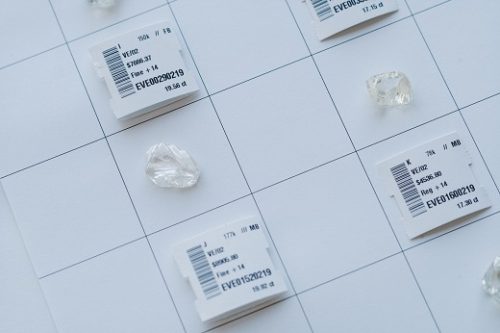De Beers CEO Bruce Cleaver has called on the trade to allow rough purchases, assuring manufacturers the company won’t require them to buy in the weak market.
“We will only sell [rough] when the demand is such that it can create sustainable value for all of us,” the executive wrote in a blog post Friday. “However, just as we are not compelling our clients to purchase, we strongly believe it is counterproductive for any part of the industry to compel them not to purchase.”
Cleaver’s plea comes after the Gem & Jewellery Export Promotion Council (GJEPC) and other Indian trade organizations called on the nation’s diamond sector to pause rough-diamond imports for 30 days, beginning on May 15. The move would improve the Indian industry’s liquidity situation and deplete inflated polished inventories, the trade bodies explained.
Without explicitly referencing the Indian trade groups’ appeal to their members, Cleaver argued that supply had already been significantly reduced after De Beers suspended production at most of its mines. “Almost all other diamond producers have halted or significantly reduced supply, with some mines unlikely to return to production,” he added. De Beers cut its production guidance for 2020 to 25 million to 27 million carats, more than 20% below its initial projection, Cleaver noted.
The company also canceled its March sight and is offering 100% deferrals at sight 4, which begins Monday. Sightholders are likely to defer the vast majority of purchases to later in the year, as weak consumer demand and the shutdown of India’s cutting industry have diminished appetite for rough.
On Friday, India extended its nationwide lockdown by two weeks, raising the question of when diamond manufacturing would revert to normal, especially in the city of Surat, which produces more than 90% of the world’s polished goods.
Marketing message
Meanwhile, Cleaver urged the industry to capitalize on the diamond’s symbolism, as consumers will seek to purchase “fewer, but more meaningful things” as they move out of lockdown. Signs of pent-up demand from delayed weddings, and self-purchases to reward hardships that have been overcome, are starting to show in China as the lockdown there has eased, the CEO commented. People are visiting stores and shopping malls again, he said.
In its communication with consumers over the coming months, De Beers will emphasize the role diamonds play in shaping a better world and in forging meaningful connections, he stressed.
“Just as they have had to find innovative ways to stay connected with loved ones, we will find new ways to connect with them,” he said.
“Throughout time, the diamond has served as a powerful symbol of connection and meaning,” he wrote. “It has always been attached to life’s most precious moments and relationships and represented a store of value, but increasingly we believe a diamond is becoming a store of values.”
Source: Diamonds.net









